Fantasmas mudos: una nota sobre la pintura
Mute Phantoms: a Note on the Painting
Чланак у часопису (Објављена верзија)
Метаподаци
Приказ свих података о документуАпстракт
El mutismo y la visualidadson dos elementos básicos de la estructura eidética de los cuadros. En la teoría del arte europea, desde Platón hasta Ortega y Gasset y Merleau-Ponty, existe una ambivalencia en la valoración de estas dos propiedades elementales de la obra pictórica. Por un lado, el cuadro se subestima en tanto que entidad visual –frente a otras formas de expresión y comunicación– porque no puede hablar. Por otro lado, en su silencio se reconoce un cierto espacio de lo visible que el lenguaje verbal no puede abarcar por completo. Finalmente, si el mutismo visual es una característica fundamental de las imágenes pictóricas, surgen las preguntas acerca de cómo confirmar con certeza qué es lo que estas imágenes significan y cómo construir un discurso filosófico sobre esta suposición.
Mutism and visuality are two basic elements of the eidetic structure of paintings. In European
art theory, from Plato to Ortega y Gasset and Merleau-Ponty, there is an ambivalence in the valuation of
these two elementary properties of the pictural work. On the one hand, the painting is underestimated
as a visual entity – in front of other forms of expression and communication – because it cannot speak.
On the other hand, in its silence a certain space of the visible is acknowledged that verbal language
cannot fully encompass. Finally, if visual mutism is a fundamental characteristic of the pictural images,
questions arise about how to confirm with certainty what these images mean and how to construct a
philosophical discourse on this assumption.
Кључне речи:
pintura / mutismo / visualidad / Platón / Ortega y Gasset / Merleau-PontyИзвор:
Escritura e Imagen, 2019, 15, 345-355Издавач:
- Universidad Complutense de Madrid
URI
https://revistas.ucm.es/index.php/ESIM/article/view/66747http://rifdt.instifdt.bg.ac.rs/123456789/2366
Колекције
Институција/група
IFDTTY - JOUR AU - Ćipranić, Miloš PY - 2019 UR - https://revistas.ucm.es/index.php/ESIM/article/view/66747 UR - http://rifdt.instifdt.bg.ac.rs/123456789/2366 AB - El mutismo y la visualidadson dos elementos básicos de la estructura eidética de los cuadros. En la teoría del arte europea, desde Platón hasta Ortega y Gasset y Merleau-Ponty, existe una ambivalencia en la valoración de estas dos propiedades elementales de la obra pictórica. Por un lado, el cuadro se subestima en tanto que entidad visual –frente a otras formas de expresión y comunicación– porque no puede hablar. Por otro lado, en su silencio se reconoce un cierto espacio de lo visible que el lenguaje verbal no puede abarcar por completo. Finalmente, si el mutismo visual es una característica fundamental de las imágenes pictóricas, surgen las preguntas acerca de cómo confirmar con certeza qué es lo que estas imágenes significan y cómo construir un discurso filosófico sobre esta suposición. AB - Mutism and visuality are two basic elements of the eidetic structure of paintings. In European art theory, from Plato to Ortega y Gasset and Merleau-Ponty, there is an ambivalence in the valuation of these two elementary properties of the pictural work. On the one hand, the painting is underestimated as a visual entity – in front of other forms of expression and communication – because it cannot speak. On the other hand, in its silence a certain space of the visible is acknowledged that verbal language cannot fully encompass. Finally, if visual mutism is a fundamental characteristic of the pictural images, questions arise about how to confirm with certainty what these images mean and how to construct a philosophical discourse on this assumption. PB - Universidad Complutense de Madrid T2 - Escritura e Imagen T1 - Fantasmas mudos: una nota sobre la pintura T1 - Mute Phantoms: a Note on the Painting VL - 15 SP - 345 EP - 355 DO - 10.5209/esim.66747 ER -
@article{
author = "Ćipranić, Miloš",
year = "2019",
abstract = "El mutismo y la visualidadson dos elementos básicos de la estructura eidética de los cuadros. En la teoría del arte europea, desde Platón hasta Ortega y Gasset y Merleau-Ponty, existe una ambivalencia en la valoración de estas dos propiedades elementales de la obra pictórica. Por un lado, el cuadro se subestima en tanto que entidad visual –frente a otras formas de expresión y comunicación– porque no puede hablar. Por otro lado, en su silencio se reconoce un cierto espacio de lo visible que el lenguaje verbal no puede abarcar por completo. Finalmente, si el mutismo visual es una característica fundamental de las imágenes pictóricas, surgen las preguntas acerca de cómo confirmar con certeza qué es lo que estas imágenes significan y cómo construir un discurso filosófico sobre esta suposición., Mutism and visuality are two basic elements of the eidetic structure of paintings. In European
art theory, from Plato to Ortega y Gasset and Merleau-Ponty, there is an ambivalence in the valuation of
these two elementary properties of the pictural work. On the one hand, the painting is underestimated
as a visual entity – in front of other forms of expression and communication – because it cannot speak.
On the other hand, in its silence a certain space of the visible is acknowledged that verbal language
cannot fully encompass. Finally, if visual mutism is a fundamental characteristic of the pictural images,
questions arise about how to confirm with certainty what these images mean and how to construct a
philosophical discourse on this assumption.",
publisher = "Universidad Complutense de Madrid",
journal = "Escritura e Imagen",
title = "Fantasmas mudos: una nota sobre la pintura, Mute Phantoms: a Note on the Painting",
volume = "15",
pages = "345-355",
doi = "10.5209/esim.66747"
}
Ćipranić, M.. (2019). Fantasmas mudos: una nota sobre la pintura. in Escritura e Imagen Universidad Complutense de Madrid., 15, 345-355. https://doi.org/10.5209/esim.66747
Ćipranić M. Fantasmas mudos: una nota sobre la pintura. in Escritura e Imagen. 2019;15:345-355. doi:10.5209/esim.66747 .
Ćipranić, Miloš, "Fantasmas mudos: una nota sobre la pintura" in Escritura e Imagen, 15 (2019):345-355, https://doi.org/10.5209/esim.66747 . .



